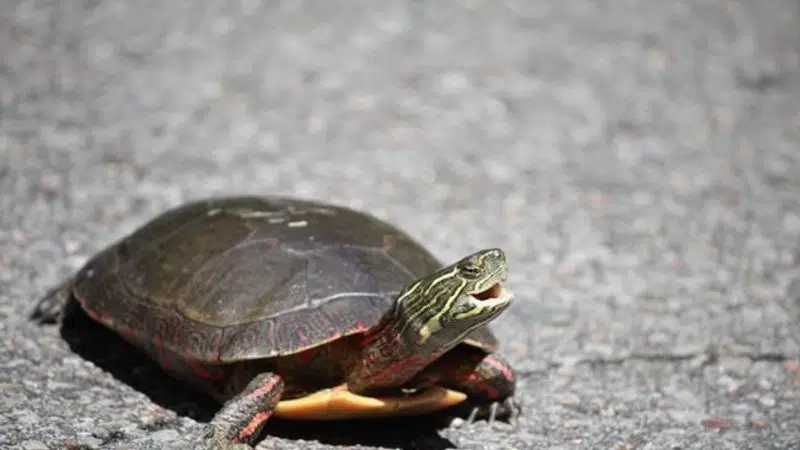
Nature Conservancy issues plea to help turtles safely cross roads
PELEE ISLAND, Ont. — Why did the turtle cross the road? — It may sound like the opening of a joke, but the Nature Conservancy of Canada is urging motorists to help the slow-moving reptiles get to the other side.
Kristyn Ferguson, a program director with the group, says this is the time of year when turtles are crossing roadways to get to nesting areas and to warm up on the gravel and asphalt.
“As we’ve encroached roads into wetlands habitat, which is a turtle’s traditional home, they are having to cross roads to get to other parts of their habitat. They are sometimes sitting right in the middle of the road warming up, and all of those things are increasing the chances they’re going to encounter a vehicle collision,” she said.


